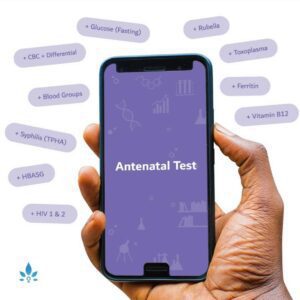Birth Defects Gastroschisis in Babies


Gastroschisis is a rare birth defect that affects 2-5 per 10,000 newborns (0.02-0.05%). It occurs when the baby’s intestines are found outside the body because of a 2-5cm opening on the right side of the belly button. The defect arises during the first trimester of pregnancy, when the primordial umbilical ring is forming. In some cases it is diagnosed by ultrasound at 18-20 weeks of pregnancy, otherwise it is diagnosed at delivery.
Standard treatment for gastroschisis is surgical repair of the defect, once the protruding organs have been slowly returned to the abdominal cavity. This technique is known as silo repair.
What are the health implications?
Babies who are born with gastroschisis have a smaller than normal abdominal cavity. The organs that are displaced (most frequently the intestines, but sometimes the stomach and liver too) are not encased in a membranous sac, meaning they are exposed to the amniotic fluid that surrounds the baby in utero. This fluid is an irritant to the delicate developing organs and can cause them to become swollen, inflamed and thickened; they may also develop an overlying fibrous peel.
The intestine may be short, or twisted, and as a result blood flow to the bowel can be disrupted. 10% of infants born with the condition will have gastrointestinal tract abnormalities and many experience delays in their bowel function due to poor absorption and deficient movement of food through the digestive system. Even after surgery to repair the defect, babies with this condition often struggle with eating and digesting, with many continuing to gain most of their nutrition via an IV line. They are also at increased risk of infections, dehydration and hypothermia.
What are Risk Factors for Gastroschisis?
The biggest risks for having a baby with gastroschisis are being a young mother and being a smoker. Expectant mothers who have been diagnosed with a genitourinary tract infection (GUI) and/or given medication for herpes (antiherpetics) are also at greater risk.
One study found that women who were under 20 years of age, smoked and had been diagnosed with a GUI have a risk of developing gastroschisis that is 25 times higher than women who are over 20, do not smoke and have not had a GUI. If the GUI is present at the time of conception it can cause cell destruction and inflammation at the site of the umbilical cord attachment, giving one possible mechanism for this type of defect.
It remains unclear why younger women have a greater risk of developing gastroschisis. One explanation is that women who are under 20 are statistically more likely to develop a GUI or STI, both of which increase the risk of this birth defect. The increased prevalence of GUIs in younger women is, in part, due to their cervical histology making this type of infection more likely. Thus, alternative environmental risk factors possibly exacerbate the risk of gastroschisis in a group that is already considered to be higher risk.
Herpes infections during pregnancy can have detrimental effects on the developing foetus. To reduce the likelihood of pregnancy complications, including premature labour, low birth weight and foetal anomalies, a mother-to-be with clinically diagnosed herpes will routinely be prescribed antiherpetic medications. Herpes infection during pregnancy is not common and it is thought that fewer than 5% of pregnant women require any sort of antiviral medication during their pregnancy; however, antiherpetic use is associated with a four-fold increased risk of gastroschisis.
The Pathogenesis of Gastroschisis
It is not fully understood what causes gastroschisis. The rarity of the condition makes it difficult to study real-life examples.
One theory is that in the very early days of pregnancy, perhaps as soon as 35 days after conception, there is a defect in the formation of the amnio-ectodermal junction (the primitive umbilical ring). During a normal pregnancy, the ring forms in the first few weeks post-implantation and a number of the early embryonic structures pass through it, enabling the embryonic cavity to enlarge and the umbilical cord to start forming.
These early structures give rise to loops of the developing bowel, which, by week 10 of pregnancy, still protrudes through the umbilical ring. Towards the end of the third month of pregnancy the protruding bowel retracts back into the developing abdominal cavity. It is thought that in cases of gastroschisis, this process is disrupted, possibly through non-closure of the ring, or a rupture to the delicate membrane surrounding the ring, localised to the right hand side, preventing the bowel from fully retracting into the abdominal cavity.
Identification of the condition in sets of siblings and distantly related family members has suggested a genetic component. However, to date, no consistent genetic abnormalities have been identified across patients. It is therefore more likely that multiple genes are involved, rendering a female more susceptible to the environmental risk factors associated with gastroschisis. The specific gene mutations that have been identified to date, require further investigation to support or disprove a causative role.
Another proposed mechanism is some sort of vascular compromise as a result of the right umbilical vein failing to develop properly. This would create a possible site for thrombosis, weakening the area and leading to the problems associated with gastroschisis.
The association between gastroschisis and smoking is thought to occur as a result of genetic variations, known as SNPs (Single Nucleotide Polymorphisms), which are more frequently observed in maternal smokers than nonsmokers.
The most likely explanation is that gastroschisis is multifactorial in origin; possibly caused by a genetic susceptibility, in combination with environmental factors, such as young age, smoking and GUI/STI exposure. These environmental factors may then make developmental defects more likely.
Nabta is reshaping women’s healthcare. We support women with their personal health journeys, from everyday wellbeing to the uniquely female experiences of fertility, pregnancy, and menopause.
Get in touch if you have any questions about this article or any aspect of women’s health. We’re here for you.
Sources:
- Ahrens, K A, et al. “Antiherpetic Medication Use and the Risk of Gastroschisis: Findings from the National Birth Defects Prevention Study, 1997-2007.” Paediatric and Perinatal Epidemiology, vol. 27, no. 4, July 2013, pp. 340–345., doi:10.1111/ppe.12064.
- “Facts about Gastroschisis.” Centers for Disease Control and Prevention, www.cdc.gov/ncbddd/birthdefects/gastroschisis.html.
- Feldkamp, M L, et al. “Risk of Gastroschisis with Maternal Genitourinary Infections: the US National Birth Defects Prevention Study 1997–2011.” BMJ Open, vol. 9, no. 3, 30 Mar. 2019, p. e026297., doi:10.1136/bmjopen-2018-026297.
- “Gastroschisis.” National Organization for Rare Disorders, 2019, rarediseases.org/rare-diseases/gastroschisis/.
- Kliman, H J. “The Umbilical Cord.” The Encyclopaedia of Reproduction, Yale University School of Medicine, 29 Oct. 2006, medicine.yale.edu/obgyn/kliman/placenta/research/Umbilical Cord EOR_163162_284_18220_v1.pdf.
- Lubinsky, M. “A Vascular and Thrombotic Model of Gastroschisis.” American Journal of Medical Genetics. Part A, vol. 164A, no. 4, Apr. 2014, pp. 915–917., doi:10.1002/ajmg.a.36370.
- Opitz, J M, et al. “An Evolutionary and Developmental Biology Approach to Gastroschisis.” Birth Defects Research, vol. 111, no. 6, 1 Apr. 2019, pp. 294–311., doi:10.1002/bdr2.1481.
- Torfs, Claudine P., et al. “Selected Gene Polymorphisms and Their Interaction with Maternal Smoking, as Risk Factors for Gastroschisis.” Birth Defects Research Part A: Clinical and Molecular Teratology, vol. 76, no. 10, Oct. 2006, pp. 723–730., doi:10.1002/bdra.20310.












































